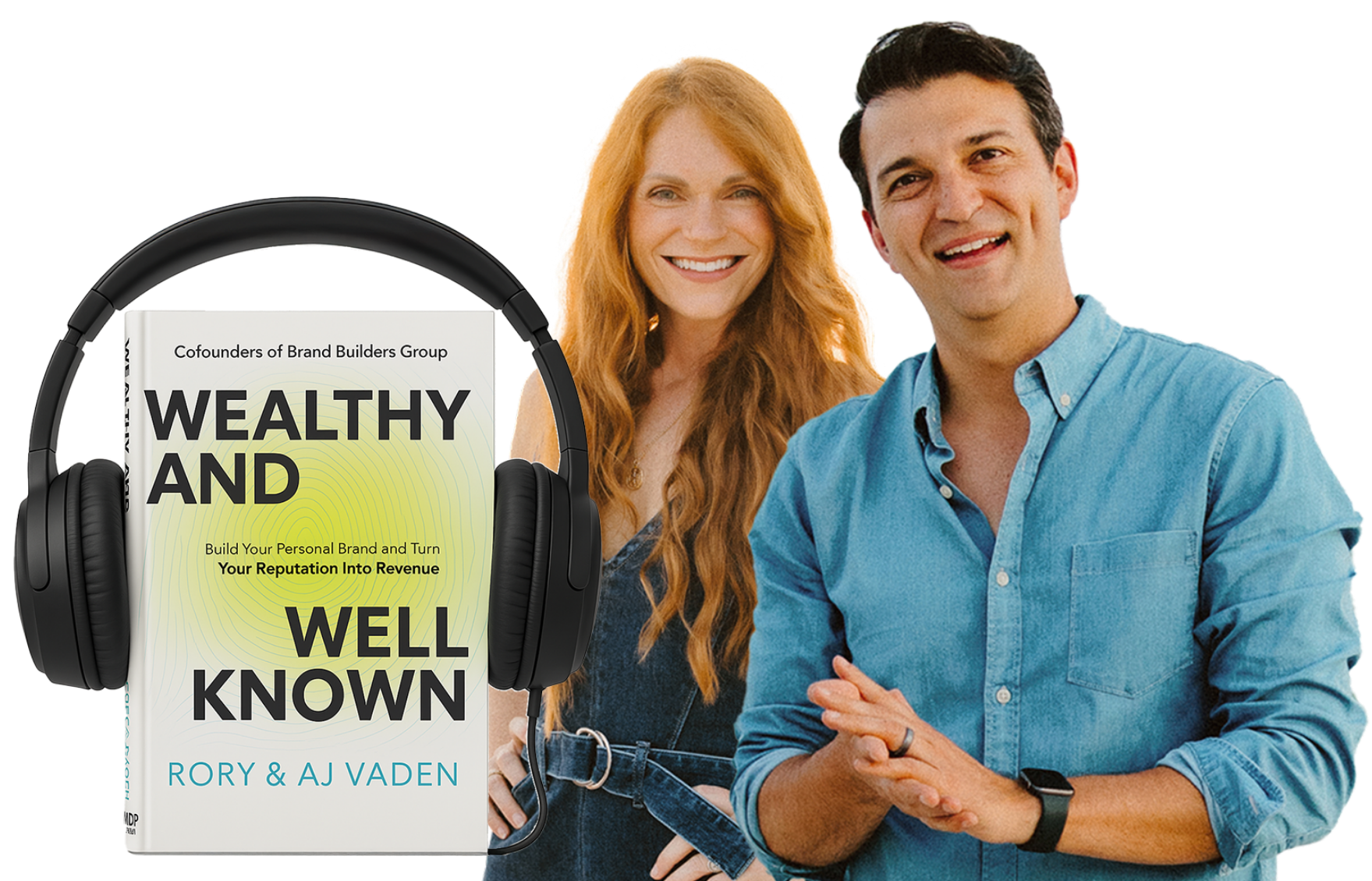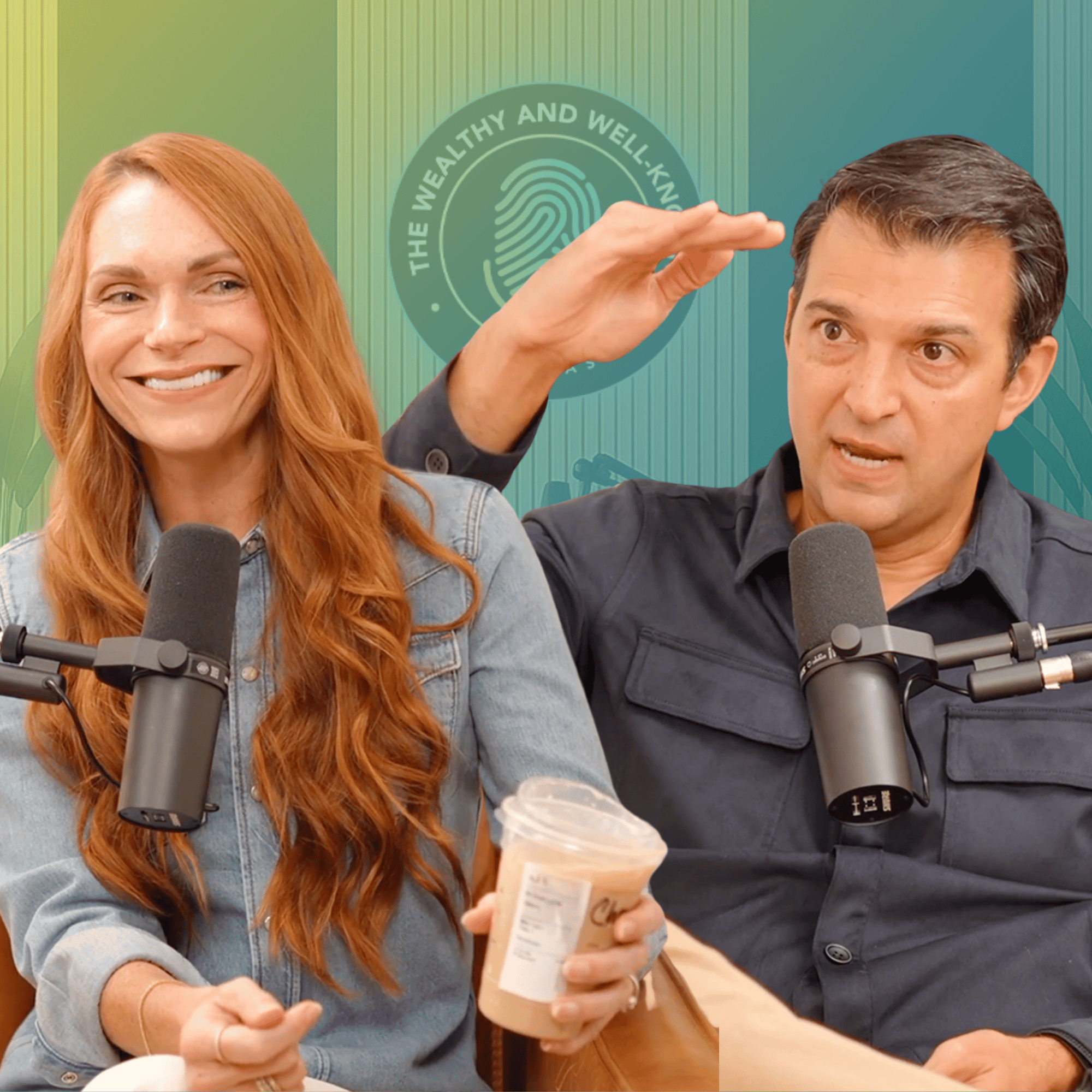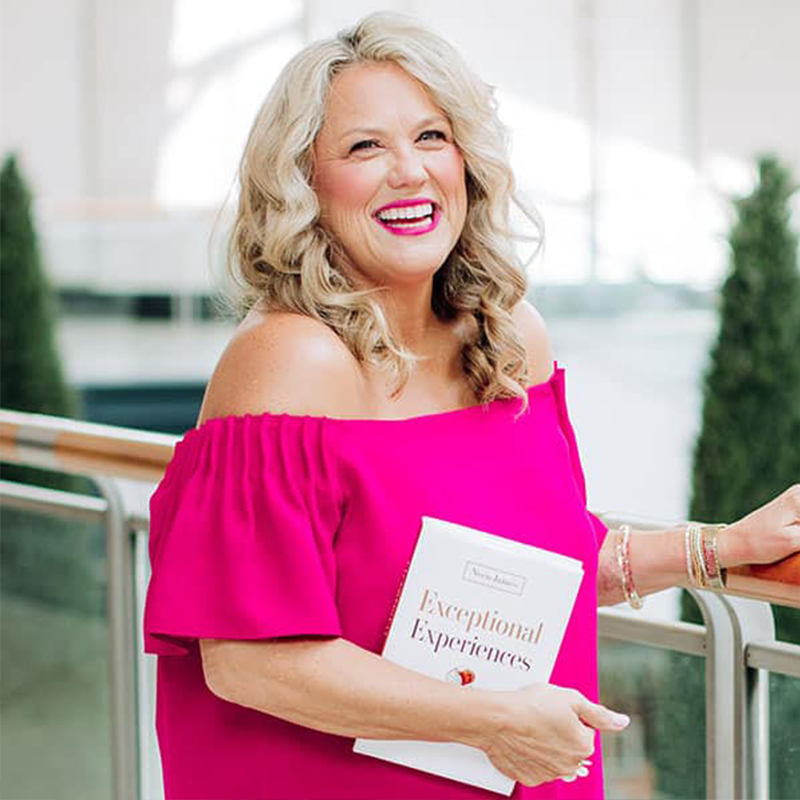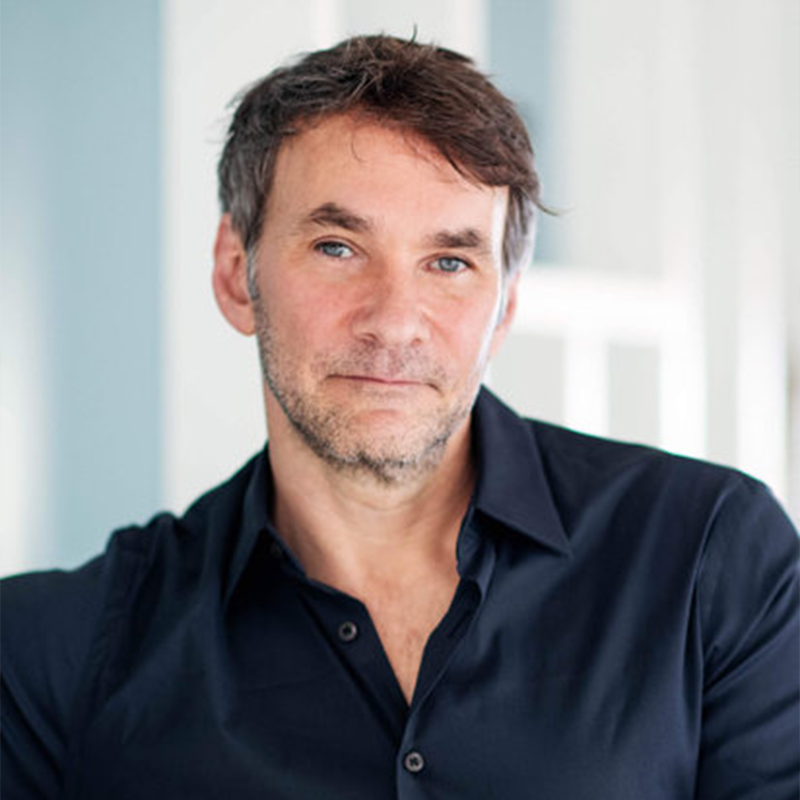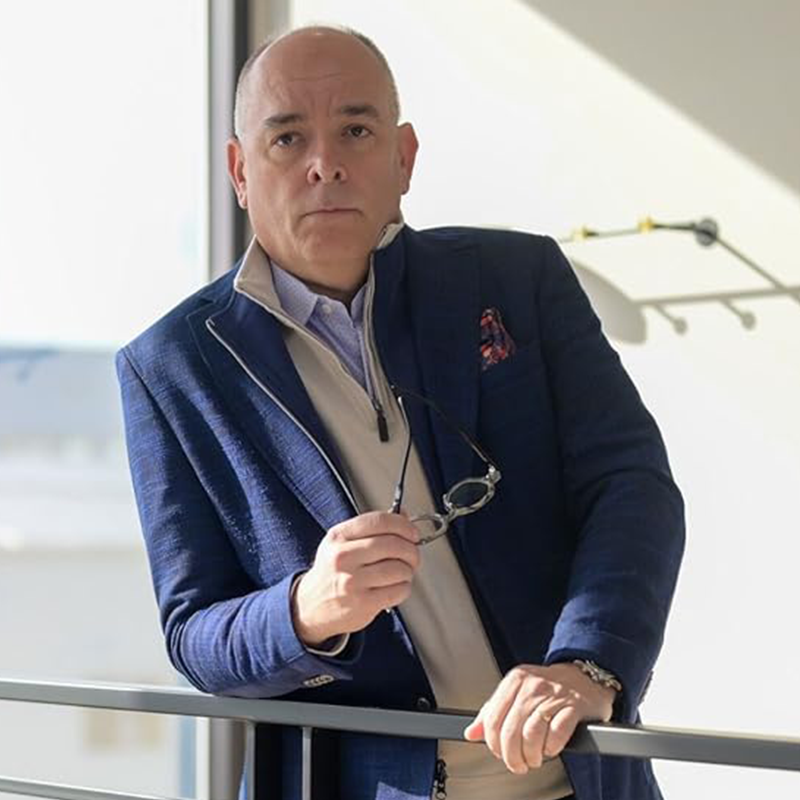RV (00:07):
Hey brand builder, Rory Vaden here. Thank you so much for taking the time to check out this interview as always, it’s our honor to provide it to you for free and wanted to let you know there’s no big sales pitch or anything coming at the end. However, if you are someone who is looking to build and monetize your personal brand, we would love to talk to you and get to know you a little bit and hear about some of your dreams and visions and share with you a little bit about what we’re up to see if we might be a fit. So if you’re interested in a free strategy call with someone from our team, we would love to hear from you. You can do that at brand builders, group.com/pod call brand builders, group.com/pod call. We hope to talk to you soon.
RV (00:54):
Oh my gosh. I am so excited to introduce you to Lee legitimately. This is my favorite bio point about Jasmine star is that she is one of my favorite people to follow personally on social media. I love her content. It’s so practical. It’s fun. It’s inspiring. You can just tell that she is one of you, a mission-driven messenger, and she just has become one of the most influential creative entrepreneurs in, in the world. She started as a photographer. She dropped out of law school, picked up a camera, was doing her photography business and has just since grown this huge personal brand. I got to meet her a few years ago. When I was with Louis at his mastermind event, she was there and then we kinda lost touch. And now all of a sudden we’re like seeing each other three times here in a matter of two weeks. And her most recent project is something called social curator. This is a subscription that is for business owners to help them do social media marketing and keep up with all the trends that are happening, understand how to do it right. And I’m hoping that’s a little bit of a preview of what we’re going to get today. So Jasmine, welcome to the show.
JS (02:04):
I am so happy to be here and right, lest you forget, we did not lose touch. Your girl was creeping from a distance. We are just now happy that I can creep openly. So now, you know, I’m creeping on you openly as opposed to privately. I’m happy. I’m happy to be here. Thank you.
RV (02:18):
Yeah. Well, and, and I know, and so AIJ, so my wife business partner, our CEO, you guys shared the stage at Amanda tresses event for faster way, and Amanda’s a close friend of ours. And and you and I are speaking at Christy Wright’s event here in a few weeks, and it’s just awesome. All good. It’s weird to say, I feel kind of weird to say this, but like, I’m, I’m so proud of you. Like, I, I love that you’re winning. I love when good people win. I feel like a lot of times, not always the good people win, but you’re like doing it the right way and,ly winning. And so yeah, so I have to share us your shares your ways.
JS (03:00):
Oh, well, okay. Well, before we get, before we get to the ways, cause I’m like, you set that bar really high. You set that bar like Olympic level high. Let me lower it a little bit. I have to say that one of the things and part of the reason why I still feel such a closeness to you and to your business and an affinity for what it is that you teach is when you had started this podcast, you had said, oh, and we with Lewis one that is like an aspirational model. I hope that one day you’re in a podcast like, well, when we were a Jasmine, when you become just your first name, you know, you’ve made it. It’s kinda like when we were Louis, everybody knows it was like Lewis house. Like
JS (03:42):
There you go. You know, very few can get to that singular letter like Oprah. But oftentimes I feel your presence when I really do talk to a business owners, because one of the things, I was a member of Lewis house mastermind, which is where you and I met. And one of the things amongst many that I had learned, and you had an hour presentation and I just had a book full of notes, but one of the things that just has stuck with me for years since that point is what I believed you call. At least I attributed to every time I say this, I’m like, well, Rory Vaden calls it the five X role. And it was one of the things that you had said is when you are teaching somebody to do something, you do, it will take them five times as long to do it, which was such a profound thing.
JS (04:24):
Because when our paths first crossed three years ago, we had like two people on our team. And now we have upwards of 23 and it’s always going back to man. It is really, you got to slow down before you speed up. And so I always think to myself, if it takes me X to do this thing, it’s going to teach me and take somebody else at five X. So let’s build that into our plan. And it’s just given us so much permission to slow down before we speed up. So thank you friends for that legacy.
RV (04:51):
Well, and you nailed the word, so that permission. So for those of you that are listening. So this is from my second book procrastinate on purpose five permissions to multiply time which was what my Ted talk was based on. And that word is permission like it is. So this is the delegate chapter you’re talking about. And we, we call it the per the permission of imperfect and granting someone else. The permission of imperfect allows you to free yourself. Which I think is interesting. So that conversation is about time. And one of the things that we learned when we were studying and putting that together was that 80% done right by someone else is always better than a hundred percent done right by you.
JS (05:33):
Oh, hold on, hold on. We need to slow that down that you need to say that again for the people in the back, because you say it because it’s just your truth and you know it, but oftentimes it’s like, Rory, like, say that again, say it just to me, I’m sure your audience is like, he says it all the time. Listen, I need to hear it. in Rory’s voice so that it sits in the back of the crevices of my mind. Please
RV (05:54):
I’ll say it. And then I want to segue to why saying it again. So 80% done right by someone else is always better than a hundred percent done right by you. And we call it the permission of imperfect and it’s it’s it’s the struggle is what got you here as a performer, won’t get you there as a leader because you got here by perfection and being good and crushing it and doing everything neatly and tightly in organized. But when you become a leader, it’s not about doing things yourself. It’s about getting other people to do. And so you have to grant yourself some imperfect. When I hear you talk about getting on camera and doing reels, that same emotional permission of imperfection is something that I’ve learned from you is just like, it’s the same thing where you go, you’ve got to give up that feeling of control and being perfect so that you can create I mean, I feel like that’s a big part of your message. [inaudible]
JS (07:00):
A hundred percent, a hundred percent. If I, if, if we can just get down to that, like I’ve often said, if I could write you a permission slip, I would, in fact, I’m telling you why I have no, I’m not writing a book right now. I have no plans. I’m not pitching. So if people are listening, I was like, I’m an agent. No, no, no. I don’t need to get the DMS. I’m nowhere near that. I know the title of my book. I know the purpose of my book. I am not ready to be a vessel for the book, but let me just tell you that what I know to be, to be certain is on the very last page, I am going to have a template for a permission slip, and people are going to write their name in, and they’re going to write the thing that they want permission to do.
JS (07:39):
Now, I don’t care what you do with that piece of paper. You can put it on your fridge. You can put on a wall, you could take a picture of it. It could be a screensaver because oftentimes we are looking for people to give us permission. When the only people who can give us permission is ourselves. But sometimes it’s nice to hear it from somebody else. I asked you Rory to repeat it back to me because that message is something I needed to hear this week. And I’m going to keep on replaying it because 80% perfect by somebody else is better than a hundred percent perfect by me. And that’s the thing I needed to hear. So yes, and amen. That’s where we started this conversation. We are hitting the ground running. I don’t even know if people, I don’t know if people’s hearts are prepared. People need to prepare their hearts for the heat that the Jay star and Roy are bringing in
RV (08:27):
And let it be done. When you get off this call, you’re just going to have to shorten your Instagram handle to J-star this is happening. So can you tell us about the early days? That’s one of my favorite things about this show is, you know, people are listening and it’s you know, they see, they see you and frankly go, holy moly, like this, this woman’s awesome. She’s crushing it. She’s up. People should make money, like tons of followers and stuff. And one of the things we want this show to be is tell me how it was when nobody was there. Tell me how it was when you posted a video. And there weren’t hundreds of thousands of people. And there weren’t views, like, take us back to how you got started and like, what did you do? And, and how did you feel? And like, how did, how did this come about for you?
JS (09:18):
Well, before I answer, I actually do want to call something out and it’s like very, very, very clear. And it is my truth is that for every person who says, wow, she’s crushing it, she’s doing a great job. I know there’s about three. Who’s like, she’s a hot mess. She’s not that talented. She’s not saying anything new. That’s not a great idea. In fact, a couple of weeks ago, I was accidentally BCC on an email where somebody said, oh yes, yes. Not that innovative. I’ve seen better in reference to the thing that I was working on. And I’m like, I sat on it. Right. I sat on it and I was like, should I say something? Am I going to be a petty, Betty? And I let it go then, and then said, person asked for a favor. I agreed to the favor. I shared my insight and advice.
JS (10:08):
And I also sent a screen grab. And I just said, I saw it, but we’re still cool. But the best thing that you could do in our relationship moving forward is if you tell me directly and this person agreed this person, so let’s just start there, right. Because I don’t wake up and be like, oh my God, it’s so great on social. Everybody loves me. Everybody sees I’m crushing it. No, there are more people who do not like what I do. And to that, I say yes. And amen. I would rather be disliked for a hundred percent of who I am than to be liked for a carbon copy of who people think I need to be. So thank you for you thinking I’m doing great. Thank you for being a champion of who I am. But I also realize there’s a ton of people who don’t like me, but I would rather have somebody not like me or entirely like me being lukewarm.
JS (11:00):
Having lukewarm followers is not my cup of tea. That’s never the thing I would want to do. One of two things. And this goes back to building a brand. I want to attract, or I want to repel. If I am not doing one of those two things, I’m doing a disservice to my brand, into the experience. I really believe with all my heart that a personal brand goes farther with a small group of people who wildly believe in the mission and the ethos and who you are. Then a lot of people are kind of like cool, forgettable, not sure I care enough to have an opinion. And so I know that it might be a little counter opposite or a little intuitive. So as I get into like origin stories, like, please know, I don’t think I’m the best thing since like flour tortillas. That’s not the case.
JS (11:39):
I just do my thing. And if some people like it great and have others, don’t, it’s equally as great. So I so one of the things as we kind of started building things out was I am the, of an immigrant I’m first-generation Latina first generation college student first-generation post-grad. I went to UCLA law school on a full academic scholarship, and I’m also first generation law school dropout. My mom had brain cancer and she had a relapse when I was in my first year of law school. And it really brought to the surface asking a big question of why, what am I doing? And I believed that getting a degree or having multiple letters after my name would be the ticket out of the body of would be a way for my family to move from one socioeconomic level to another. But I never asked if that was the thing I was supposed to be doing.
JS (12:30):
And so in combination with my mom’s relapse and culmination being me being wildly unhappy, and in combination with me having my first bout with depression, I was like, I’m unhappy. And this isn’t working. And when I gave myself again and let’s talk about permission is I couldn’t give myself the permission to truly ask what it is I was supposed to do, because that’s not, when you do, when you’re a daughter of an immigrant, like you see your parents do whatever it takes to put food on the table. And so all of a sudden it felt very luxurious for me. Like, let me punch suffocate. What makes me happy? It’s a very American notion what makes me happy? And that’s all the thing that my parents wanted, but I felt like the weight and the responsibility being the eldest of five children. And again, it was a story I’m telling myself.
JS (13:11):
So then we’re sitting at dinner and my husband has the conversation and says, well, what do you want to do? And it was the first time in my entire life where I’m like, what do I want to do? And I vocalized that I wanted to be a photographer. And he said, great, but you don’t own a camera like that might help. So decide to get a camera. And the thing that I realized as most people starting, any, anything, this is the conversation happens in 2005. I get a camera 2006. Okay. I get my first gig paid gig late 2006. And then 2007 is when I file a DBA, like 2007 is my first year of business. And I was terrible. I was terrible. I wasn’t even bad. It was like, so my daddy is the pastor of a church in east Los Angeles. And so, you know, you’re really bad when parishioners of the church don’t even want you to shoot their photos for free.
JS (14:08):
Like, you gotta, you gotta be real bad. I was like, yo, they’ll look, God, like, you know, it’s like, there’s like, where’s the nepotism here. So you know, that’s the case. But the thing that I started to do, which was very new at the time was to share what I was learning. And a lot of people who were seasoned in the industry, if they happen to see the content that I was putting out. And by this time there wasn’t social media, it was just putting out on a blog. I was putting out the blog on my journey, what I was doing, what I was learning, the pitfalls and the struggles and people who are seasoned, who happened to see that would be like, well, that’s a stupid idea. Nobody like nobody cares where you’re going on vacation or nobody cares what you’re shooting, sweetheart.
JS (14:42):
Why don’t you just get a camera and get some practice? And number one, I agree with the sentiment, but what happened was the climate of the way that businesses were being built was wildly changing. And the thing that I understood early on as a result of putting stuff out imperfectly, was that people were buying a highly emotional pro service wedding photography, which is the thing that I was doing, having no idea of the intellectual property or the talent that it took to create the thing that we did. So photographers want to lead with the camera, the gear, the awards, the studio, the albums, the flash, and then along comes somebody and breaks the paradigm of listen. You’re selling something that people really don’t understand. If I could sell on emotion, that somebody would invest with me as the photographer, in addition to the photography, the game shifted.
JS (15:29):
That’s what I started to do. So I was writing blog posts when nobody were reading blogs, I started getting on Twitter early days of Twitter. And I’m just like, let me just see what I can do here. And I realized that what was happening on the blog was unidirectional conversation. I was writing about what I was doing and people would come and read, but it was coming to me. Very little dialogue. Twitter changed the game in that the dialogue became two-way. And I started realizing that I can create experiences. Having somebody have an affinity toward me or the thing that I was creating simply by responding. Now, this is not, I was having a two-way conversation because my work was so good or my business savvy was so impeccable. It was truly, people started caring about what I was producing simply because I cared about them.
JS (16:11):
So I learned that in 2009, 2010, and that has been foundational when it comes to building a brand on social and on the next big thing, people are like, oh, well Jasmine’s about Instagram. And I was like, yes, but I was about blogging heavily. I was getting 25,000 unique views a day before social media came around and I started realizing, okay, I’m going to start building a hundreds of thousands of followers on Twitter. And then all of a sudden Facebook came around and I did the same with hundreds of thousands on Facebook. So you tell me the next thing I need to do. So worry. If you were to tell me Jasmine, to build a personal brand, you need a ride to donkeys and a clown suit and be whistling to kazoo. Watch me buy a kazoo. I will do whatever it takes to make somebody feel something about me. And I’m less concerned about being perfect. The most talented, the most qualified or the richest that’s in me. And I could be wrong to me. A foundation of a brand is what somebody says about you when you’re not in the room. And the way that you buttress, what people say is about caring about them first, before you want them to care about you.
RV (17:06):
Yeah, that was so good. Although I do think J star could be a kazoo.
JS (17:13):
Why don’t we, why don’t we for every person that leaves a review for the podcast, we send a little J star kazoo
RV (17:19):
Is blown up a Shopify store, J star. Cause yeah, so, well, I mean, that’s the irony of the whole personal brand. Like even the, even the, even the name, personal brand, it’s like, it makes you think it’s about you. And it’s like, it’s not about like the more you, the irony is, the more you care about yourself, the more you’re worried about what other people think. The more you’re trying to put out perfect content for you, like the less effective, it feels like it’s such a great paradox. Yes.
JS (17:54):
A thousand percent, a thousand percent. Like you have a stronger personal brand when people have an opinion about you. Like you have a stronger personal brand when people feel like you are never above taking the time that you have to respond to a question or comment. Now, do I think that you need to respond to every comment in every DM? Well, it depends on your bandwidth, but as long as you know, you’re walking in integrity that you’re doing as much as you can, however you can, than anybody else can’t expect enough. And people feel it, people do feel it.
RV (18:24):
Yeah. So I want to talk about the platforms for a second. Cause, cause you know, the principle here is the same and I think brand builders group operates more in principles that we do in tactics. Like we’re where frankly, we’ve never been that strong at like the keeping up. We’re not moving fast enough. I think a lot of times to keep up with some of the tactics and algorithms and things like that. But the, you went from blogging to Twitter, to Facebook, Instagram, these
JS (18:53):
Youtube in the middle, the YouTube in the middle and then Snapchat and Pinterest and clubhouse.
RV (18:58):
Are you still doing all of them? Like, so are you still doing all them? Is there one that you’re hanging out in and you know, people talk about all the platforms are different. Do you feel like they’re really different or is there, are there principles that make them the same and then kind of like, where are you now? Like where do you see this going?
JS (19:17):
So they’re, they’re different enough. And that’s the thing that I really want to put like a little, a little bit of a pin in is that I am not choosing a platform based on where I want to be. In fact, my preferred platform is not where my customer is now, but I do believe it’s where my customer will be in the future where I, if I have free time to spend on social, I’m going to tech talk. I just think it’s fascinating. I think the algorithm is spot on. I think that they serve content. So it almost feels like, you know, you like lift your head up and you’re like, where did two hours ago? And you know that they’ve hit on something when you hear that quite often from a lot of its users. And so am I still active on Facebook?
JS (19:56):
Yes. Am I still active on YouTube? Yes. Am I still active on Twitter? Yes. Do I have a Pinterest strategy? Yes. Am I still blogging? Yes. Am I on Instagram? Yes. But oftentimes we talk about like having a pillar strategy. So it’s quite often and I have a podcast, the Jasmine star show. So we have two pieces of anchor content. It might come in the form of a long form blog post or the form of a podcast. And then based on the topics of the blog post or the podcast, we then can create subsidiaries for each of our social platforms because Facebook, you can get a little bit more long form than people are used to normally reading on Instagram. So what we can do is we create like our primary, our primary platform. And that for me were our customers for social curator are right now is Instagram.
JS (20:37):
That’s where they’re spending. Most of their time, my focus is on Instagram. And then we have like a, like a tailwind from there. So it’s like a week and four hours later that post slightly different copy. So that it’s tailored for the Facebook group, Facebook users. And it feels native. So anything that at mentions or hashtags that existed on Instagram, they’re not going to be pushed over automatically to Facebook. We have to contextualize the content that we have. And then another four hours later, we’ll be putting that out on LinkedIn. If we created a video and like an IETV that is edited in a vertical format. So it feels native to the platform, but then it’ll also be edited in a horizontal format so that when we put it on YouTube, where we put it on Facebook, it feels native to it. So I don’t think that I am like, so all-knowing to create and choose a platform. I am just saying the more that the social curator content exists on these platforms, the higher likelihood it is to find a customer. Now I know that sounds wildly overwhelming to a lot of people, but I’ve been doing it now a decade. So I can think, I think
RV (21:38):
Content on the team. Yes,
JS (21:41):
But it’s not for my personal brand. That’s where social security that’s for social security. The vast, yeah, the vast majority. Definitely. So are
RV (21:48):
You editing all that? You’re not, I
JS (21:50):
Don’t edit, I don’t edit videos. I have a videographer, but when it comes to creating reels, I am creating reels. When it comes to recording podcasts, I’m recording the podcast. We do have a podcast producer, but it’s like, for us, it’s like, I’m doing like intro, body outro and we don’t have any ads. So it’s, we try to keep it as streamlined as possible. We want to work smarter, not harder. Now having said all of that, if somebody is listening and immediately hears, this says, this is so not for me. Great. It pushed you. Remember, I only want to attract a repel. So if I’m repelling you in situate, let me see if I can bring you back into the fold with one thing. Can you choose just one platform? And it’s not the platform that you really like, because you might just love Instagram, but if you know your customers on Facebook groups, okay, then you separate your time with where you want to consume versus where you want to create. And once you’ve chosen, where you want to create on the platform that you think is most inclined where your dream customer actually exists, then your strategy is just to focus on that platform and crazy enough. And just test me on this. The more that you’ve become familiar with one platform, the easier it is to scale when you go to a second, but right now resist the temptation to create for all platforms and always focus on one, build out the strategy, see what’s working and see if you can duplicate it on a secondary platform.
RV (23:01):
Yeah. And to what you’re saying, cause we, we teach something called the content diamond, which is a very, you know, similar kind of thing where you’re just taking one piece of content and, and fractionalizing, if you have the team, you have the capacity, you can do it. So it’s not that you’re creating unique content for each platform. It’s that you’re contextualizing the content you have for each platform.
JS (23:24):
Correct? Correct. And whereas right now, you know, Instagram is heavily indexing on Instagram reels. Well, there was a time where I was testing, repurposing the reels onto Facebook and it just didn’t work. That was just like the views weren’t there. It just sat, there was a really low engagement. And so what I took from that, and which is very clear is that people on Facebook are not about, so when I’m posting a reel, I will not be repurposing it on to Facebook. I might repurpose a real on Facebook stories because it disappears after 24 hours and a real on Facebook stories looks a little bit more native to that platform, which is fine. But what would go in its place would be something entirely else. That’s going to be serving the Facebook audience in a way that they deem most valuable.
RV (24:07):
And so how do you know, like you’re, you’re you you’ve said a couple of times like go where your audience is, by the way, you know my personal brand, when we exited our former in 2018, we had to start over from scratch all our social media, zero podcast, zero email database back on zero. So it’s been interesting building it from 2018 on versus when we had originally started back in 2008, but our team kind of runs, we run the content diamond on my stuff, but what AIG does, we’re just now starting to build AIG has been built in most of the companies, just the CEO, like she’s really been focused on the company. We’re starting to build out her personal brand, but what she’s been doing in the interim is exactly what you said. She consumes on Instagram, but she creates for LinkedIn.
JS (24:54):
Oh, I was going to say that I was like, y’all know, you guys are on LinkedIn. Like that’s, you know that that’s your platform easily. Yeah.
RV (25:00):
And she has a lot of traction there and you know, she just like has a lot of that background that like B2B. So she, she does it. But when you say go where your audience is in terms of where do you create for, are you doing that based on demographic data of who the users are? Are you doing that based on UTM tracking based on who’s clicking through and coming into funnels and buying, is there some other measure? Like how do you, like you’re saying your, your audience right now is on Instagram, but you’re not, you’re not saying that’s because you like to be on Instagram yourself necessarily. So how are you coming up with that answer?
JS (25:39):
So we know that our dream customer is 33 years old and she lives in Manhattan beach and she has two boys aged three and five and she drives a white and black range Rover. And her husband is a lawyer and they met in college. We also know that she was raised on a goat farm in Ohio, California, which is where she developed her craft at creating goats milk soap, which he started selling in Manhattan beach farmer’s market, where she came across a buyer from anthropology who really liked her product. And then she just realized that if she wanted to create a business, you can no longer have a hobby disguised as a business, but to actually create a business. And at this point in time where she’s looking at, how does she create the marketing resources and building brand resources online. And that is how our paths intersect
RV (26:21):
And you’re, and you’re, you’re saying she’s on Instagram.
JS (26:24):
That in order to determine with the platform you should be creating on, you must first and foremost know who your customer is, because if your customer is 33 years old with two kids in an affluent area and educated at this point in time, she’s on Instagram. Now, if you’re creating resources for millennials and it’s a printed tea shop, despite what people say, Snapchat is alive and well, I would over-index on Snapchat. If I was creating that type of content, I would also go over to TechTalk. Now, if my target demo is a 49 year old professional male or female who has expendable income to invest in like my business, coaching, marketing resources, whatever the case may be, I’d be on LinkedIn. So again, part of why people have a difficult time choosing the platform is they need to first and foremost clearly identify who they’re selling to. And then you could just simply look at the analytics, where are those people at? And then you go there.
RV (27:19):
Yeah, yeah. Got it. How do you make money from all this? Like so you put in all this work and you never sell on social media. Like it’s all this value you just don’t, you know, like where does the money happen? Like because if you just go online, you make reels of like five reasons you should, you know, buy my program, right? Like, no, one’s going to watch that. So how do you, how do you make that transition from I’m providing value and adding content to I’m converting a customer and collecting money. Cause mama has got to pay the bills.
JS (27:59):
So it’s not a one size fits all answer, but what I can say, and you and I had a conversation earlier today, and so forgive me for repeating, but I firmly believe that a strong entrepreneur does three things in their business. They build a brand, they market their business and they get sales. That’s like, that’s sort of the three. I mean, obviously there’s a lot of minutia and nuance in that, but those are the three main pillars. Social media is so good at building brand, giving somebody an emotional response to who you are or what it is you sell. The more that you give a K the more that you give away content, when you share your insight, your resources, how you’re set apart, bringing people on your journey. That’s all brand-building. What is somebody saying about you when you’re not in the room? AKA, when are they sending a post to one of their friends who says, you really got to check out this brewery guy?
RV (28:41):
That’s the litmus test right there when they, when they send their best friend. And they’re like, thank God to see this. That’s like,
JS (28:47):
But that’s brand. Now when somebody is getting somebody else to co-sign that brand experience, they’re going to get to your page. And once they scroll past two or three posts, you’re now marketing. You are then there to set somebody up to educate them on what it is you do. That’s marketing. You’re not selling at this point in time. You’re just talking about the benefits of drug testimonials. Talked about insights. You talk about how it is that you do what you do when you talk about this diamond thing. I’m so intrigued. One thing that I could do a heck of a lot better job is like owning frameworks. They’re like the five X role I member. Now. I’m like he’s diamond ring fraction. You know his content. And here I would like, we have pillars either way. We can definitely get better at that, but that’s marketing.
JS (29:25):
Now, if you will, you’ll be hard pressed to, for me to be creating a lot of content selling social curator. What we try to do is to create multiple funnels of getting people in by giving value. We know that our conversions are quite high because far before that they have typically been on our list or in a funnel for more than four months. Now let’s pause here. Social curator is $49 a month. For some people that’s like blink away money for other business owners. That’s a considerable chunk of money each month. However, if it took on average four months to convert somebody new on the list or in the funnel to actually a paying subscriber, how much more longer will it take for somebody to convert somebody at a $500 price point, a $5,000 price point of $50,000 price point. A lot of the misconceptions when it comes to I’m doing this work and I’m not getting sales.
JS (30:16):
And I’m like, yeah, how much is your product or service? The more expensive it is the longer the gestation period will be to convert them strictly on the back of social, which is why whenever I get a DM and someone says, Jasmine, I really want to learn how to build a brand. I’m not using my two thumbs to be like, well, first things first make like one, you’re not paying me for consulting. So what I want to do is I need a list of top 10 frequently asked questions. And then I created a free resource. That number one serves the heck out of them. Number two gives them such high valuable content. And number three empowers me to build trust. And when somebody says, Hey, Jasmine, I’m really wanting to build a personal brand. What I do is like, I’m so happy you’re here. Let me give you a download link to a free brand building guide.
JS (30:54):
I dropped the link for them when someone’s like Jasmine, I’m having a difficult time with Instagram rules here. Here’s a link of a resource that I created. Step-By-Step on how for you to do that. Jasmine, I really need an Instagram marketing guide. Got that for you. So what I’m doing is list building in my DMS because having somebody a paid to click from an Instagram post is so, so, so, so, so highly unlikely and largely happens for lower ticket items. And I’m telling you that as a monthly subscription for $49, the push to click to buy is so low. We have to do is cultivate. Give trust, gives so much value that they believe when they hand over their credit card, they’re going to be getting a five or 10 X return based on if that’s what I got for free. Imagine when I get on the inside,
RV (31:35):
That’s that’s so convicting to hear you say that to just your level, going, even for me to get someone, to pull their credit card out for 49 bucks a month, it’s hard. Like people, people have, you know, they have 25 people show up for one webinar and no one buys and they go, this stuff doesn’t work. And it’s like, no, like it takes trust. It’s trust. You have to build trust. And oh yeah.
JS (32:00):
So Roy, if we, if we tap there for a second, you have just said 25 people come on a, on a webinar. Now, if you’re converting on a webinar, I tip my hat to you. That’s hard. That’s where the gangsters play because you’re giving your heart and soul. And you’re speaking for 35 to 47 minutes before you get into a pitch. And then you sit and you hear crickets. And even though you had 25 people to show up for the webinar, you know, by the time you started pitching about four to 5% of them just completely clicked away. And they’re just waiting to get to that free Q and a, and then you’re like giving your last breath and you don’t see anything conversion. Now we have to say that none of that was in a void. It doesn’t exist in a vacuum. That’s just their inception point.
JS (32:40):
When I teach a webinar where we will get on average 30,000 people to sign up and around 3000 people will convert. You think I’m crying or bemoaning about the 27,000? I say, no, you might’ve said no, but I don’t hear no. What I hear is not yet. My objective is to come back and out, serve you so that you’re like me. I tried, I tried and I couldn’t resist giving her my credit card for the 27,000. I just want to be like, thank you for coming to the party. We’re just getting started. I think that that approaches so much of a better cause it keeps you going and it gives you a reason every day to get up and out serve,
RV (33:11):
Hey man, that is what we’re going to land the plane. Jasmine, where should people go to learn about you and social curator and everything? Your,
JS (33:20):
I appreciate you so much and all social platforms, you can find
[email protected].
RV (33:28):
Huh. It will be J star, but not yet. [inaudible]
JS (33:33):
Let’s build on, let’s go and get that URL like J star kazoos let’s let’s make it happen on Shopify.
RV (33:39):
I love it. Well thanks for encouraging and just, just the honesty here and just keep doing what you’re doing. Like you’re, you’re inspiring people and yeah, like just keep winning because you inspire me. I know you inspire ha and so many people, it just it just get it’s tactical and all that, but it also gives you hope that you don’t have to be a shyster to do this. Like you don’t have to be someone that’s Hocking your stuff and pitching your stuff and making wild claims and you don’t have to use flashing yellow boxes all the time. And like, you can just out serve people and just love on them and build, build trust. And it still, it still, it comes around. So.
JS (34:27):
Oh yes. And amen. I thank you. I thank you. A thousand times over.

